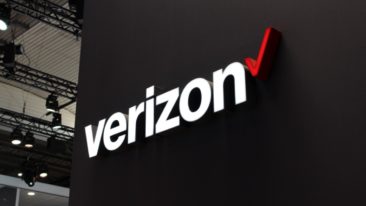Verizon today revealed a few of its 5G expansion plans, promising roll out of 5G services in around 30 markets by the fall of this year. The move highlights an urgency on part of Verizon to lead the 5G space; however, the carrier could still lag behind competitors that are promising a seamless 5G coverage across the US in 2020.
The expansion plans were unveiled by Verizon executives during an investor conference hosted by the carrier. Executive vice president at Verizon, Ronan Dunne said that those markets will be “real markets, open for sale.” His comments looked more like a response to all the criticism Verizon faced when they rolled out the initial 5G Home service that was short of scope and scale.
For the expanded 5G service, the carrier will be using the millimeter wave (mmWave) spectrum. However, Verizon CEO Hans Vestberg hinted about their plans to ultimately layer in additional spectrum resources with the use of dynamic spectrum allocation technology sooner than later. It is likely to consist of mid- and low-band spectrum assets that are extremely vital for 5G coverage expansion.
With 5G deployment across the initial 30 markets, Verizon is likely to gain considerable credibility. As such, the carrier is counting on those 30 markets (for 5G Home and 5G mobility) to pick up the much-needed momentum for 2020.
In October 2018, Verizon officially became the first carrier to roll out a 5G service in the US with the launch of its 5G Home services. But then, 5G Home had a proprietary standard and covered just a handful of locations across the initial four markets.
For 5G Home service, Vestberg stated that they were waiting for the 5G New Radio (NR) specification to get well established before updating their services.
Since 5G Home, Verizon’s arch competitor AT&T rolled out a standards-based 5G mobile network.
A test of the Verizon’s progress in the “real” 5G speeds was showcased at CES this January, where the network showed a promising download rate of 900 Mbps.
Full speed of the standards-based network is ultimately expected to hit the gigabit level.
Since the millimeter waves needed by 5G can’t travel enough as compared to the spectrums used in 4G and 3G, real mobile wireless 5G network will needs tons of new small cells to be installed all over cities closer in close proximity to the locations where users access the network.
Therefore, real 5G deployment will be a complex task and, as of now, nothing can be said about how well these 30 cities will be covered by Verizon.
AT&T is slightly ahead of the game
At present, AT&T’s 5G mobile network is available in around 12 US markets; however, the company has recently revealed their plans of extending their coverage to 9 more markets during the next few months. AT&T has also promised a nationwide 5G coverage by the mid of next year. Smaller competitor T-Mobile is also promising a nationwide coverage by the fall of next year.
Both competitors have revealed their plans of using lower-band spectrum holdings so as to achieve their US-wide coverage objectives.

